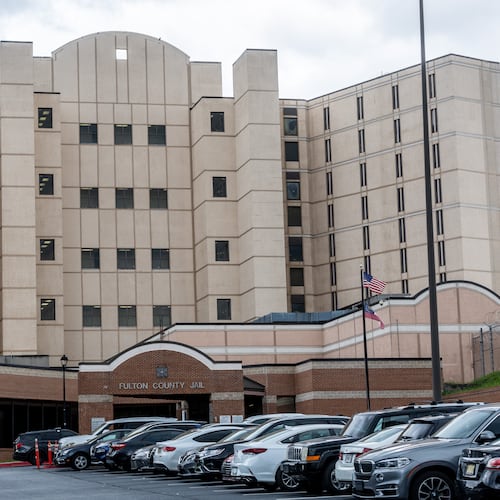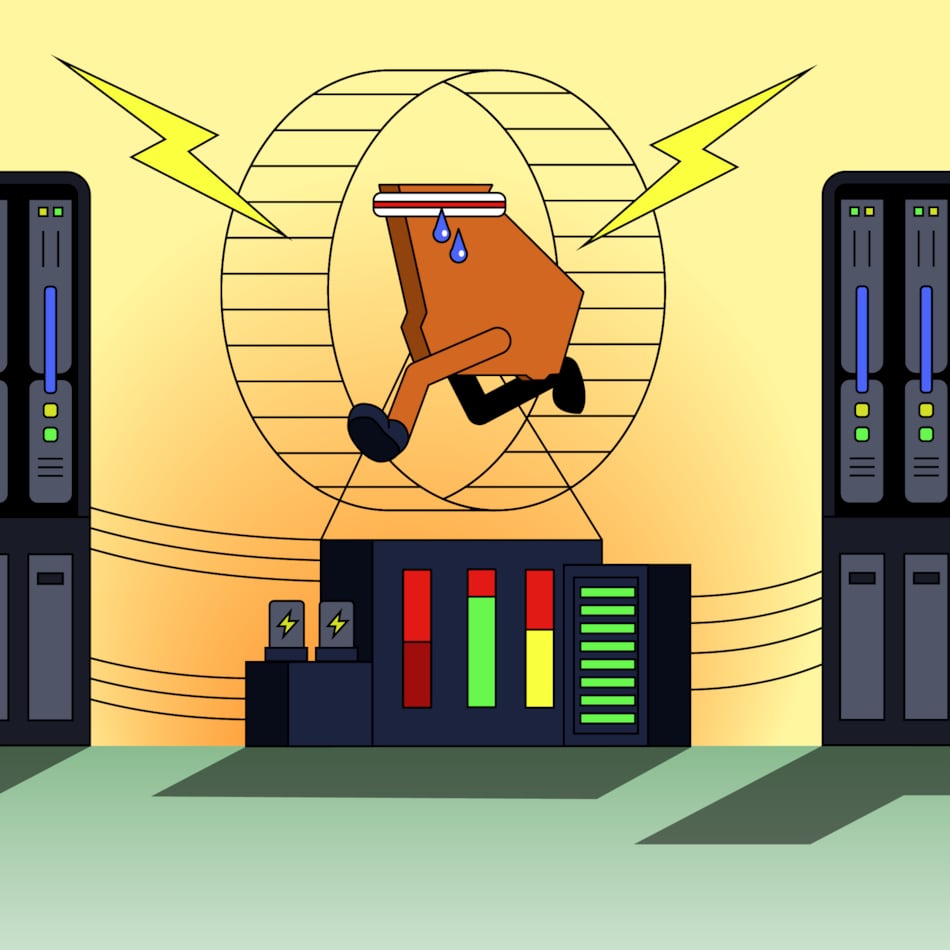Determined to put a degree or two on her résumé, Pamala Davis isn’t intimidated by the commute, the long hours or the thousands of dollars in student loan debts that she’s incurring.
What could be a worry is the government.
New regulations are due in November that could forbid federally backed loans to programs and schools in which a certain proportion of students are defaulting on loans. And that might make it impossible for Davis to get the tuition help she needs to complete her degree in health care administration.
Davis, who lives in Jefferson, is an assistant director of health services for a hospice, but she wants more options for advancement. She’s on track to receive a bachelor’s degree in 2012, then plans to go on for a master’s.
“I see myself with a good job, a good-paying job,” she said. “I do not feel a concern about repaying my loan.”
For the feds, the problem isn’t Davis, it’s her school: the University of Phoenix.
Proprietary schools, like Phoenix, have boomed for several decades. More recently, their growth has been fueled by a savage recession that convinced many workers they needed more training or schooling, a notion nurtured by blizzards of ads in places like MARTA trains and buses.
But, for the past few months, for-profit schools have been under federal scrutiny. Some stand accused of deceptive recruiting tactics. The government also argues that a painfully large number of students from the for-profit schools default on their loans — and taxpayers pick up the tab.
The schools, while vowing to weed out any bad actors, have vehemently argued that the government is overreacting.
Through their trade association, they have mounted a lobbying campaign against the proposal. A series of ads critical of the possible changes have run in newspapers, including The Atlanta Journal-Constitution. The ads are sponsored by Corinthian Colleges, which owns the Everest Institute, a school that offers health-care specialties at campuses in Decatur, Marietta, Norcross and Jonesboro.
More than 3 million students in the U.S. take at least one course a year at for-profit schools, which have revenues estimated at nearly $30 billion.
While that is less than a fifth of the nation’s post-secondary student population, 88 percent of them borrow federal funds, according to the National Post Secondary Student Aid Study. The rate of borrowing for students at private not-for-profit schools is 54 percent. At public schools, it’s 23 percent.
Moreover, the median loan debt carried by students at for-profits is $14,000 — nearly double the average at nonprofit institutions, according to a statement last week by U.S. Education Secretary Arne Duncan.
A reshaping of the rules threatens the revenues and even survival of many for-profit schools. The government’s move highlights divisions in higher education between schools run as businesses and those operating as nonprofit or public institutions, but also between the kinds of students who slide from high school to college and those who enroll later in life — a matter of age, but also often of income.
A nonconventional path
Metro Atlanta has many for-profit schools — DeVry, American InterContinental, Strayer, Herzing, Kaplan, Westwood and, of course, Phoenix — as well as scores of smaller ones that teach everything from law to nail care.
Defenders of the for-profits say, shut down those schools’ student loans and you shut out students like Davis, who is 48 and working full-time.
Even someone like Andrew Hamann, who enrolled at Westwood College after high school, might not qualify as a “traditional” student.
He was waiting tables full time at a Chinese restaurant for two years while earning an associate degree in computer network engineering. Three weeks after receiving his degree, he landed a job for a company producing television software and equipment.
The job has taken him to about 30 countries in the past year, he said. He might decide to go back for a master’s in engineering.
“I would like a conventional college because it looks better on paper. But, with my schedule, I probably can’t,” he said. “And if I couldn’t get a loan, it would take me six years to do something that should take a year and a half.”
Are the proposed rules that would tighten requirements for loans protecting students, defending taxpayers or destructively meddling?
Ryan Rauzon, spokesman for the Apollo Group, which owns the University of Phoenix, said the government’s action will mostly hurt the older, less-affluent, working students.
“Non-traditional students are 70 percent of the total,” he said. “We believe we have a role to play. It is short-sighted to target proprietary, for-profit schools alone.”
Phoenix graduates on average boost their income 9 percent, he said.
As for those who do not see such success, the economy must bear some blame, Rauzon said: Aren’t lots of graduates having trouble finding work? Students from all kinds of schools default on loans.
The stakes in those defaults have risen. In 1990, the federal government wrote student loan checks for $12.7 billion. In 2008, the category had grown to $84 billion. Among for-profit institutions, default rates over two years were 12 percent, said Education Secretary Duncan. At public schools, defaults came at a 6 percent clip, while private nonprofits had defaults at a 4 percent rate.
Over the life of the loans, defaults are much higher. In the 15 years after entering school, students at for-profit colleges defaulted on about 30 percent of loans made, compared to 15 percent at public schools and 14 percent at private nonprofits, according to the Chronicle of Higher Education.
None of this proves that the for-profits are doing something wrong, argued Harris Miller, chief executive of the Association of Private Sector Colleges and Universities, which represents most for-profits.
Instead, he said, it says something about the kind of students served.
These students are likely to be carrying adult responsibilities, juggling jobs and families and mortgages. They are less likely to be affluent, more likely to be minorities.
Miller condemned recruiting deceptions, but said those practices are already illegal. Aside from that, he said, the government should butt out.
“You should be able as a grown-up to decide to enroll,” he said. “The Department of Education thinks that Washington knows best — better even than a well-informed consumer.”
The department isn’t scheduled to announce the new rules until November. The impact may be dramatic, Miller said. “You could have hundreds of thousands of students no longer given the opportunity of enrolling in these programs,” which often have more flexible schedules and less restrictive admissions.
The schools argue that the drive for profits does not make them prone to missteps. But critics say concern about investors gives the schools an incentive to lure ever-more students, even if many of them are likely to have trouble repaying loans.
After all, the government backs the loans; the schools cash the checks. If a student defaults, there’s no financial effect on the school. To critics then, these loans are the moral equivalent of the sub-prime surge during the real estate bubble — hyped-up marketing that lured in borrowers who were statistically likely to default, while taxpayers paid the bill.
“These schools are guzzling down our dollars and not doing much to educate people and prepare them to be successful,” said Lindsay McCluskey, president of the United States Student Association, which represents 4 million stu- dents, none from for-profit schools.
“They rely on very-low income students to attend their schools, but they don’t adequately prepare students to be financially stable,” she said. “They are not preparing them to have jobs that will let them pay off their loans.”
Drop-out defaults
There’s some evidence that the biggest problem is not with graduates at all.
The worst default rates are among those who drop out without completing degrees, said Terry Hartle, senior vice president of the American Council on Education, which represents presidents and chancellors of both for-profit and nonprofit schools. “It’s a little ironic — the more money you borrow, the more you are likely to pay it off.”
The group doesn’t question the need for regulation, but it is skeptical about how the government will measure each school’s performance on the loans. Carrying out the new policy will be difficult, Hartle said.
“But we want to do everything we can to minimize student defaults,” he said. “All institutions can do a better job at educating students about the consequences of defaulting. Because if you default on a student loan, the federal government will wreck your financial life.”
Whatever the government decides, some students are sure to take risks — gambling they will be able to repay the loans needed to reach their dreams.
Shanon Campbell, 39, of Riverdale, is an executive assistant who passed up college 20 years ago — and is glad she did. “I had no idea what I wanted to do.”
Now she’s enrolled at the University of Phoenix in April, taking courses in health administration. She has a student loan, but she’s confident. “I have a goal and a plan,” she said. “I see myself with a good job. I can see myself in an office with a name tag on it that says ‘Shanon T. Campbell.’”
About the Author
The Latest
Featured

